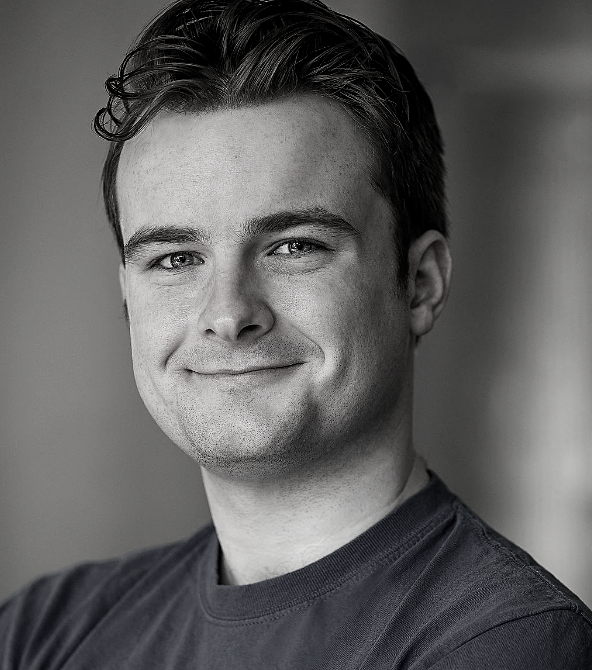REVIEW: Geoff Sobelle’s HOME journeys from hyperrealism to slapstick
Geoff Sobelle’s HOME, recently presented by Luminato Festival at the Bluma Appel Theatre, exhibits the American theatre creator’s aptitude for alchemizing relatively simple concepts into winding theatrical explorations. Reviews of previous productions indicate that his plays’ titles often divulge their central concerns: The Object Lesson, first staged in 2013, involves hundreds of cardboard boxes filled with objects both possessed and abandoned, while FOOD, an immersive dinner party performance from 2022, meditates on the experience of eating.
HOME, which premiered at the Philadelphia Fringe Festival in 2017 before touring internationally, aims to investigate the relationship between the concepts of “home” and “house.” It’s a multivalent work that toggles between gentle and abrasive, understated and triumphant, complicated and straightforward, experimental and crowd-pleasing. Like an unoccupied residence, director Lee Sunday Evans’ production is porous, able to support the whims of whoever might walk in next.
A Lecoq-trained actor with an interest in what his website calls “the sublime ridiculous,” Sobelle performs in the largely wordless HOME, opening the show by entering a barren stage from the audience. Then begins the process of constructing a two-storey house (scenic design by Steven Dufala). Sobelle staples a plastic sheet to a wooden frame of unwieldy size, winking at the audience as he wrestles with the clunky object, his breathing signalling exhaustion.
After that first laborious step, everything becomes easier: furniture appears like magic via tricks of light, often eliciting applause, and a team of hard hat-wearing actors carries out the bulk of the construction in montage. (HOME’s performers include Sophie Bortolussi, Jennifer Kidwell, Ching Valdes-Aran, and musician-composer Elvis Perkins, although the program doesn’t specify roles.) The tension between Sobelle’s initial struggle — drawn-out, intentionally mundane — and the bubbly nature of the speedy, music-backed sequence that follows is representative of HOME’s pinballing tone.
Once the construction crew finishes their project, complete with bathroom, kitchen, bedroom, office, and living space, the show turns its attention to what goes on inside. Evans initially employs a theatrical language bordering on hyperrealism: lighting designer Christopher Kuhl pokes sun through a stage-right window, waking up an older woman and initiating her morning routine. In full view of the audience, she pees, brushes her teeth, creeps down the stairs, and begins concocting breakfast. The whole sequence takes at least five minutes, like it might in real life. This splendid attention to duration recalls slow cinema auteurs like Tsai Ming-Liang and Kelly Reichardt, influences too rarely felt in theatre.
The 100-minute show soon accelerates big time, becoming almost Chaplinesque. Sound designer Brandon Walcott sends forth operatic arias as characters pop out of unexpected places, all living out their morning in the same space without acknowledging one another. It’s as if the house’s previous inhabitants are occupying it simultaneously, though HOME’s logic isn’t quite so literal as that — after a while, the residents do interact, breaking the established pattern.
HOME’s handful of performers can only conjure so much chaos. To push the mayhem further, the cast enlists a sizable group of spectators to play guests at a birthday party. The climax, full of Dionysian energy, sees Sobelle running around the stage, frenziedly directing audience members to carry props and stand in distinctive formations.
There’s complexity in HOME’s mélange of storytelling vocabularies. As a celebration of life, the show is joyous and unpredictable. But in my experience, its attempts to do everything — and therefore appeal to everyone — left it sometimes feeling rather general. That’s half the subject matter’s fault, I think: “home” may be just a little too broad an anchoring concept. Of course we see ourselves reflected in people going through common morning routines. But what about the specifics lying beneath?
A memorable sequence toward HOME’s end helps answer the question. Sobelle has two audience members describe their childhood homes, room by room, into microphones. As the pair of stories overlap, visual anarchy still unfolding, the show manages to plunge below the surface, prompting reflection on the homes each of us in the Bluma will return to after curtain call — and what we’ll remember of this grand fantasia as we wake up tomorrow and start to brush our teeth.
You can learn more about HOME here.
Intermission reviews are independent and unrelated to Intermission’s partnered content. Learn more about Intermission’s partnership model here.














Comments